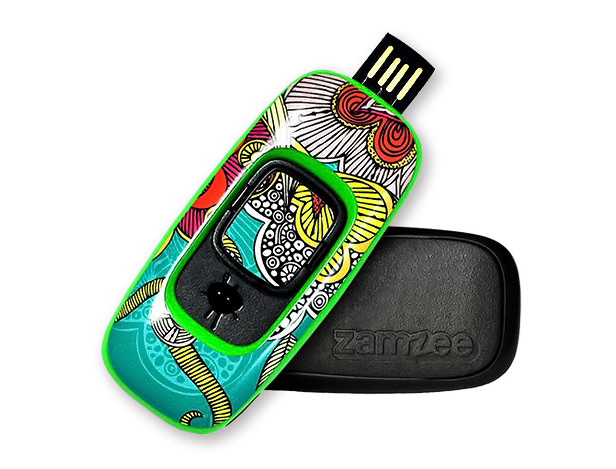Virtual World Takes on Childhood Obesity

Malica Astin, 11, never paid much attention to how much physical activity she got. But one day she played basketball while wearing a small activity tracker called a Zamzee on her waist. Later, she plugged it into a computer’s USB port and uploaded the data captured by the device’s accelerometers. Unlike a FitBit, a popular pedometer geared to adults, Malica’s Zamzee didn’t tell her how many steps she took or calories she burned. Instead, it gave her points for the movements she made.
Even months later, she recalls the details of that first windfall: 758 points. And why not? The points are a currency that she can spend in the virtual world of Zamzee.com, where she created an avatar and outfitted it with braces, a necklace, and a hula skirt.
Malica has since earned 3,612 “Zamz,” and could eventually save enough to get real items like an iPod Nano (16,000 Zamz) or Wii console (18,000 Zamz). “At first, I didn’t know what it was all about,” she says. “Then I really started liking it.”
Malica’s experience illustrates the goals of Zamzee, a startup that is testing the notion that the addictiveness of games can be harnessed to solve a seemingly intractable social ill—in this case, childhood obesity. Rather than focusing on weight loss or diet, Zamzee hopes to reward movement of any kind in children 11 to 14, the ages when, according to research, physical activity drops precipitously.
Zamzee is a for-profit venture started by HopeLab, the nonprofit foundation funded by eBay founder Pierre Omidyar and his wife, Pam. (HopeLab has also created the Re-Mission video game to increase medication compliance among kids with cancer.) Although Zamzee formally launches this fall, it has been in pilot programs in schools and community centers in Atlanta, Chicago, Honolulu, and the San Francisco Bay Area.
Malica is one of 20 middle-school girls who has been trying Zamzee at a Boys & Girls Club in Atlanta. It’s a daunting proving ground. Georgia ranks second in the nation for childhood obesity, and 52 percent of middle-school students fail to meet the CDC’s recommendations for daily activity. The situation is so dire that Children’s Healthcare of Atlanta, a system of pediatric centers, recently launched a hard-edged ad campaign aimed at overweight children.
In contrast, Zamzee is about carrots rather than sticks. Parents put money into an account to fund the rewards that their children can try to earn with their Zamz (though some donors, such as the Mayo Clinic, are providing funding during the pilot tests).
Neuroscientist Sandra Aamodt, the author of Welcome to Your Child’s Brain, praises Zamzee’s focus on physical activity instead of weight. But she cautions that a substantial body of research has found that intrinsic motivation outlasts extrinsic rewards: “There’s this funny tendency to lose the focus on why you enjoyed something in the first place,” Aamodt says.
With that in mind, Zamzee’s developers have been testing multiple methods for motivating children. Steve Cole, a biomedical scientist at UCLA who heads research and development for HopeLab, says Zamzee has found that combining virtual and monetary rewards can be successful.
Even so, not all Zamzee users are as motivated as Malica. Emani Welch, 13, an Atlanta seventh-grader, isn’t racking up enough points for rewards. She’s yet to create an avatar or even log on to Zamzee.com. “I just sit still most of the time because there’s not much to do,” she says. “I go play tennis every now and then.”
Keep Reading
Most Popular
Large language models can do jaw-dropping things. But nobody knows exactly why.
And that's a problem. Figuring it out is one of the biggest scientific puzzles of our time and a crucial step towards controlling more powerful future models.
The problem with plug-in hybrids? Their drivers.
Plug-in hybrids are often sold as a transition to EVs, but new data from Europe shows we’re still underestimating the emissions they produce.
Google DeepMind’s new generative model makes Super Mario–like games from scratch
Genie learns how to control games by watching hours and hours of video. It could help train next-gen robots too.
How scientists traced a mysterious covid case back to six toilets
When wastewater surveillance turns into a hunt for a single infected individual, the ethics get tricky.
Stay connected
Get the latest updates from
MIT Technology Review
Discover special offers, top stories, upcoming events, and more.